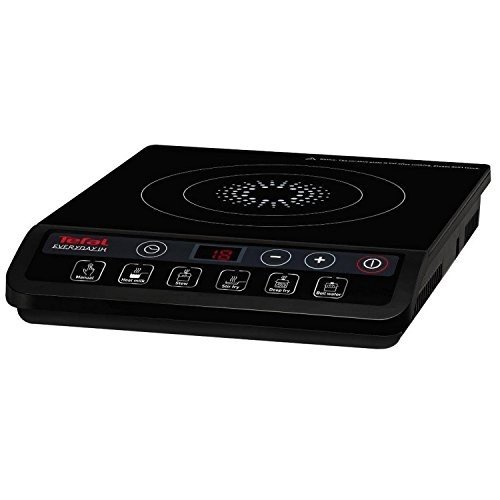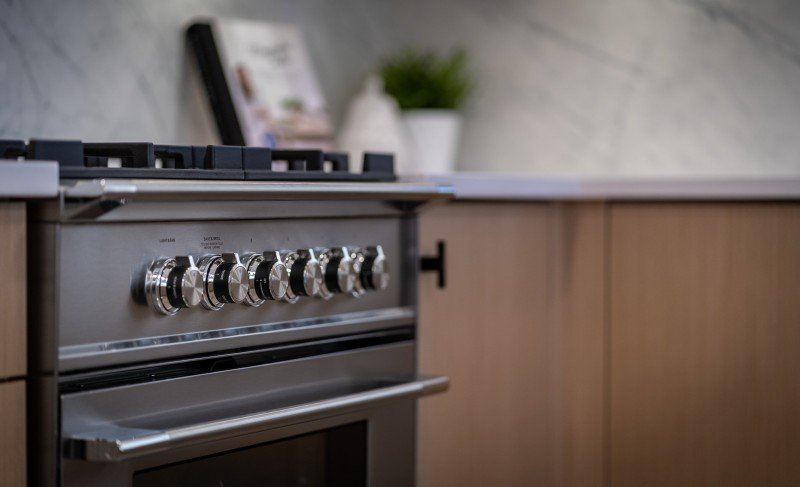What Oven Should Be Your Next Big Obsession?

2025-03-05 03:46
24
0
본문
 How to Repair Common Oven Parts
How to Repair Common Oven PartsOven is a common kitchen appliance used to cook food. The heat generated by the oven sterilizes food and kills the majority of microorganisms.
All bakers require an accurate oven thermometer. Knowing how your oven works will help improve your baking, roasting and cooking skills. It can also help you avoid those hot spots that can ruin cookies, cakes and baked goods.
Thermostat
The thermostat is among the most crucial components of your oven, helping to make sure that the temperature of your food matches what you've set on your control panel. It can be problematic as is any other sensor or switch that is electro-mechanical. The oven can overheat or underheat, or simply not keep the temperature you set.
The oven thermostat is basically tiny strips of two different metals that are bonded together. When heated, the different metals expand and flex at different rates, making or breaking an electrical circuit. When the metal in your thermostat reaches the temperature that you set on the control panel it will shut off power to the heater. As the oven cools the bimetallic strips expand in a circuit, re-establishing it and turning on heating element. This process continues to ensure a constant temperature within your oven.
The oven must be disconnected and all screws removed to diagnose a thermostat problem. Set your multimeter to the Ohms setting and then test the thermostat. If the multimeter shows zero or close to zero it means that the thermostat is working correctly and does not need to be changed.
If the multimeter isn't reading anything, then the thermostat is defective and must be replaced. Cooker Spare Parts suggests that you replace your thermostat with a thermostat of the same model as the one you have. They are available on the internet or in an appliance store and can be purchased at a reasonable price.
Bake Element
 The bake element is crucial to the functioning of your oven. It provides heat that allows it to cook food items. It's a simple component that converts electricity into high temperatures for baking, roasting, premium kitchen Appliances and Kitchen Renovation broiling. Electric best ovens uk and ranges usually have heating elements, which can be either exposed or hidden under the floor.
The bake element is crucial to the functioning of your oven. It provides heat that allows it to cook food items. It's a simple component that converts electricity into high temperatures for baking, roasting, premium kitchen Appliances and Kitchen Renovation broiling. Electric best ovens uk and ranges usually have heating elements, which can be either exposed or hidden under the floor.In general oven heating elements comprise of high-resistance metals such as nickel-chromium. They convert electrical energy into heat by the process of resistance, which then radiates through the oven interior to raise the temperature to the desired level to cook various types of food items.
When you start the oven the heating elements begin to generate heat by the high-voltage current that flows across the surface of the metal. The element is a coil or ribbon (straight or corrugated) of wire, and as the electric current passes through it, it starts to get hotter. The element will glow red hot when it reaches the temperature you want.
The baked element is the main source of heat for most oven functions. It's usually found in the bottom of the oven, and is used to clean the oven in a variety of ovens that are automatic. When it starts to burn out you may be noticing that your oven doesn't preheat as quickly or that your food isn't fully cooked.
To verify that you have a working oven baking element, plug your multimeter into its red and black ports, then rub the probes made of steel against each other on one side of your device. The other end of the element against one terminal and then place your hand on it. If the element feels warm, take it off it and try testing it again. If not, take it off the element and try again.
Broil Element
The broil element is typically situated in the upper part of the oven cavity and provides high heat like a grill to cook or brown food items. The oven's broil setting can be an excellent way to quickly sear meat crisp vegetables, heat lasagna or caramelize the top of a casserole.
Similar to the bake element the broiler heating element converts electrical energy into heat through the process of resistance. It is comprised of an inner core comprised of wires made of metal, encased in an insulating expanded product called perlite. The inside of the element is then covered with an outer layer of stainless steel to protect the wires against direct contact with the oven. The three-layer structure helps lower the broil element's temperature, making it safer and more efficient than the older designs of elements.
While you can use any baking or broiling heating element in your oven, make sure to choose one that matches the wattage that is recommended for your oven. A different wattage can cause damage to your oven or cause it to overheat. You can check the wattage of your oven and the rating of the new heating element by checking their voltage and current ratings on the control panel of your oven.
It is also advisable to check the resistance of your old element and compare it to the power of the new broiler heating element. The higher the resistance, the greater energy an oven element consumes.
If your broiler's heating element is not working or functions at all, you must replace it as soon as possible. Your oven must work properly for you to to cook your favorite foods. If your oven doesn't function in any way, or just intermittently, then the issue could be in a different part.
Light Bulb and Assembly
The oven light lets you keep an eye on your food as it cooks, Best Hobs without having to open the door and let heat escape. The light will also let you know when the casserole is done. However, it's not uncommon for the bulb to go out. It can be quite frustrating, but you can fix it yourself. Before you begin, make sure that the breaker hasn't tripped and that the three-prong connector is in good condition.
First, take out the light bulb that was in use and then locate the new one. You may have to look online to find a replacement that matches the wattage and type of oven you have. Some use standard 40-watt appliance bulbs, while others require halogen bulbs up to 50 watts. Be aware that the oil in your hands could damage the halogen bulb, so it is recommended to use cotton gloves when handling it.
Before you place the new bulb in place, you should first take it out of its glass casing. It's important to take this step slowly to ensure that you don't fracture it. You'll then need to remove the air from the bulb and replace it with a mixture. This will provide a longer life for the filament.
If your bulb is constantly going out, there could be a wider electrical issue that must be dealt with by a professional. Double check that you are using the correct oven bulb and look over your Use and Care Guide to find more troubleshooting advice. Make sure to unplug the oven and shut off the power before beginning any repairs. This will protect you from electric shock.
Vent Tube
The vent tube is an important oven component that permits a small airflow inside the cavity. This allows the bake element to circulate heat around the oven and ensures that the temperature is evenly dispersed.
It also allows the vapors be released from the oven, and smoke to be drained from the cooking surface. It is essential for proper functioning of any gas or electric oven.
Vents for ovens can become blocked by a variety of factors. Accidental spills and splatters from cooking can leave sticky residues on oven vents, which attract dust and other particles which can lead to obstructions or blockages over time. Oil and grease can also be airborne and settle around vents. Other environmental factors such as construction and Kitchen Renovation renovations can cause dust to enter the vents. This can cause clogs.
Based on the oven model the vent tube could comprise an a bottle guide 20, spreader 46 and fill tip 12 that are integrally formed with the pipe 32. For example, the bottle guide 20 may have a tapered exterior surface which is in harmony with the tapered inside of the spreader 46. This allows the vent tube to be effortlessly inserted into different sizes and designs of bottle necks.
A blocked vent tube could cause a reduction in pressure within the enclosure, which can lead to an exhaust downdraft, which pulls the exhaust forward and down the vent, damaging the oven's components. If you believe that your vent tube is blocked or blocked, consult an expert for assistance. They will diagnose the problem and give suggestions for clearing or cleaning the vent.

댓글목록0